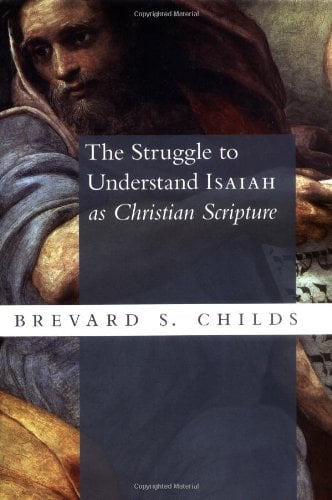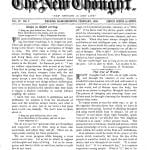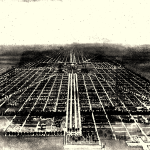Cyril of Alexandria (ca. 378-44 A.D.) before he became embroiled in controversy with Nestorius and others in about 430 A.D., Cyril wrote some major commentaries on the Bible, including on Isaiah and John. He stood, not surprisingly, entirely in the Alexandrian tradition of interpreting the Scriptural text, and being of a polemic turn of spirit, he often took serious issue with the Antiochean approaches. He has a good deal to say about the literal and spiritual senses of the Biblical text. It is interesting however that Cyril, unlike Origen thinks that there are some passages in the OT that have only a literal sense, and no spiritual sense at all. This view allows him to relegate some portions of the OT, especially some of the legal portions (e.g. some of Leviticus) to a second class status. If it can’t be related to the mystery of Christ somehow, it does not have a spiritual sense only a literal one. Notice as well that included under the heading of literal is some figurative speech such as metaphors. Cyril also insists that the spiritual sense of the text is an objective component of the text, not merely a matter of interpreting things spiritually. While his repeated focus and emphasis is on the spiritual sense of the text, he does insist that one cannot and must not bypass the literal sense to get to that spiritual sense. In his Preface to Isaiah and the process of interpreting Is. 7.14 he says “those who reject the literal sense of the inspired Scripture as something frivolous deprive themselves to a certain extent of the possibility of understanding what is written in them.” One ascends to the spiritual sense by properly dealing with the literal historical sense. And Cyril cannot wait to get to the theological pith enclosed in the historical husk. He was after all one of the most brilliant of the early church’s theologians, so it is no surprise that he wants to get to the subject he is most skilled at.
Cyril, like Clement and Origen before him stresses the unified message of the two testaments, the message of salvation. Having said that Cyril compares the illumination which comes from the OT like that of the moon, compared to the illumination of Christ in the NT which is like the sun. 2 Cor. 3.6 leads him to say about the OT that the law is both perfect and imperfect. It is imperfect if one doesn’t go beyond the letter to the spiritual in the OT. In a revealing moment, as he is interpreting Is. 11.2 Cyril says that the spiritual sense of that text which has to do with Christ’s victory over sin and judgment can be attributed to “the conscious intention of Isaiah himself”. From that same 2 Cor. 3 text, Cyril derives the notion that there is a veil over the minds of Jews preventing them from seeing the Christ in the OT text, and the spiritual sense of the Law.
In Cyril’s Isaiah commentary, he attends to both the literal and the spiritual meaning of the text, and actually spends a good deal of time on the historical sense. For example, in dealing with Is. 5 he compares Jer. 9.2 and points out that the vineyard is Israel. Even in texts like Is. 7 and 9, Cyril attends to the original historical sense and context of the text. Cyril shows considerable interest in Biblical geography, spending a good deal of time on it, but he really does not seem to know Hebrew, and what little insight into the Hebrew he reflects seems to have been derived from his knowledge of Jerome’s work. Occasionally, and in a manner more restrained than in the case of Eusebius, Cyril finds allusions to the Roman Empire in the OT. So Is. 11.15-16 predicts that Caesar would conquer Egypt and even suggests the text tells us how this was accomplished, and again Is. 19.1-5 refers to the same subject, even mentioning Vespasian as the conqueror.
A good example of his pursuit of the spiritual sense of the text comes in his discussion of Is. 11.1-3, in his lengthy study of the implications of the word ‘rod’. He cross references numerous other uses of the term in the OT, Ps. 23.4, Jer. 48.17, and underlying this whole approach, as Childs stresses, is the assumption of one divine author of the whole Bible and therefore of a theological coherence to the Bible which allows a comparison and contrast of a single term across widely diverse texts. This is of course one of the things even in modern conservative exposition of the Bible that leads to a stripping of terms and concepts from their original contexts, or an ignoring of those contexts with the usual distortion of meaning that results.
Cyril’s exposition and homily on Is. 52.13-53.12 is detailed and profound, as he shows the correspondences between the OT text and the NT use of the text, often bringing out the theological depth of the material. Like other Alexandrians, he does not refer to God suffering, but rather to Christ as the true human being entering into the depths of human suffering. It needs to be stressed that Cyril often reminds that it is the Holy Spirit, and not native human intelligence that allows him to see the profound spiritual meaning in the text. Without the Holy Spirit’s illumination it would be impossible, which is to say, in the case of those presently without the Spirit, they cannot understand the riches and depths of the spiritual sense of the text. As Childs stresses: “Cyril is not simply allegorizing the text, if that is understood as replacing the Old Testament text with a totally alien system arbitrarily forced upon it. Rather, Cyril comes to the text from a holistic understanding of the theological substance of Christian scripture, and then seeks to find further illumination of God’s revelation by rethinking the subject matter from within as he intertwines Old and New Testament texts into a new configuration.”












